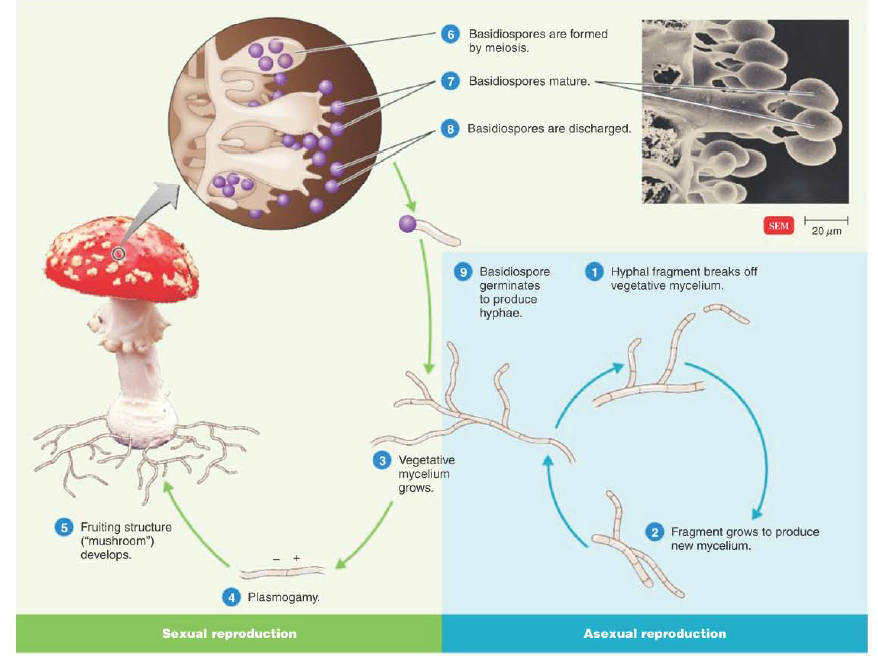 |
| Previous Image | Next Image |
| Description: Mushrooms appear after cells from two mating strains ( + and - ) have fused. The Basidiomycota, or dub fungi, also possess septate hyphae. This phylum includes fungi that produce mushrooms. Basidiospores are formed externally on a base pedestal called a basidium. (The common name of the fungus is derived from the club shape of the basidium.) There are usually four basidiospores per basidium. Some of the basidiomycota produce asexual conidiospores. The fungi we have looked at thus fa r are teleomorphs; that is, they produce both sexual and asexua l spores. Some ascomycetes have lost the ability to reproduce sexually. These asexual fungi are called anamorphs. Penicillium is an example of an anamorph that arose from a mutation in a teleomorph. Historically, fungi whose sexual cycle had not been observed were put in a "holding category" called Deuterolllycota. Now, mycologists are using rRNA sequencing to classify these organisms. Most of these previously unclassified deuteromycetes are anamorph phases of Ascomycota, and a few are basidiomycetes. Mushrooms appear after cells from two mating strains ( + and - ) have fused. The Basidiomycota, or dub fungi, also possess septate hyphae. This phylum includes fungi that produce mushrooms. Basidiospores are formed externally on a base pedestal called a basidium. (The common name of the fungus is derived from the club shape of the basidium.) There are usually four basidiospores per basidium. Some of the basidiomycota produce asexual conidiospores. The fungi we have looked at thus fa r are teleomorphs; that is, they produce both sexual and asexua l spores. Some ascomycetes have lost the ability to reproduce sexually. These asexual fungi are called anamorphs. Penicillium is an example of an anamorph that arose from a mutation in a teleomorph. Historically, fungi whose sexual cycle had not been observed were put in a "holding category" called Deuterolllycota. Now, mycologists are using rRNA sequencing to classify these organisms. Most of these previously unclassified deuteromycetes are anamorph phases of Ascomycota, and a few are basidiomycetes. Picture Stats: Views: 777 Filesize: 512.01kB Height: 658 Width: 878 Source: https://biology-forums.com/index.php?action=gallery;sa=view;id=49577 |
